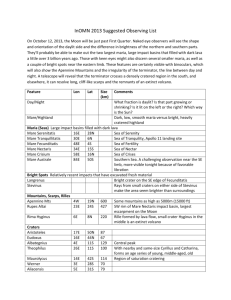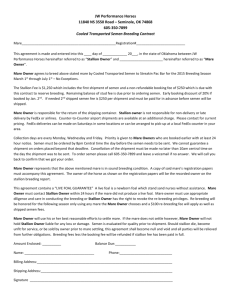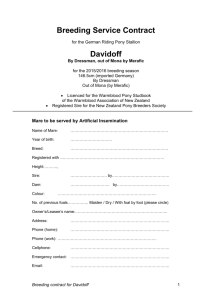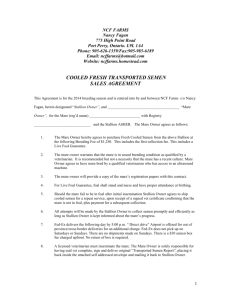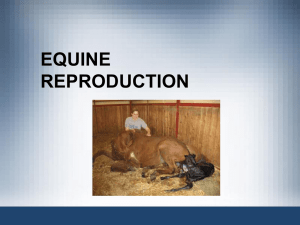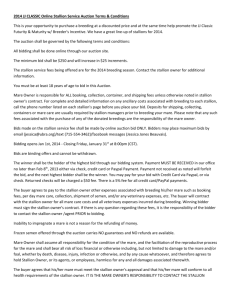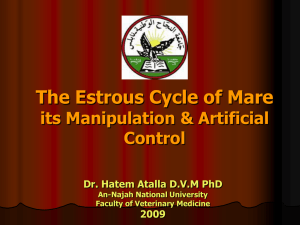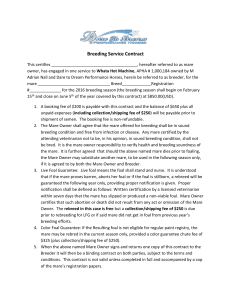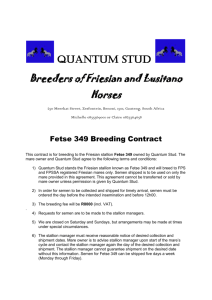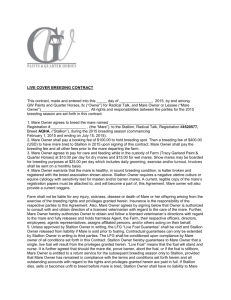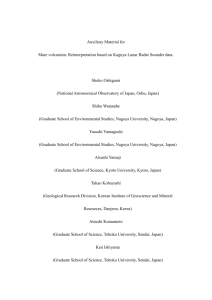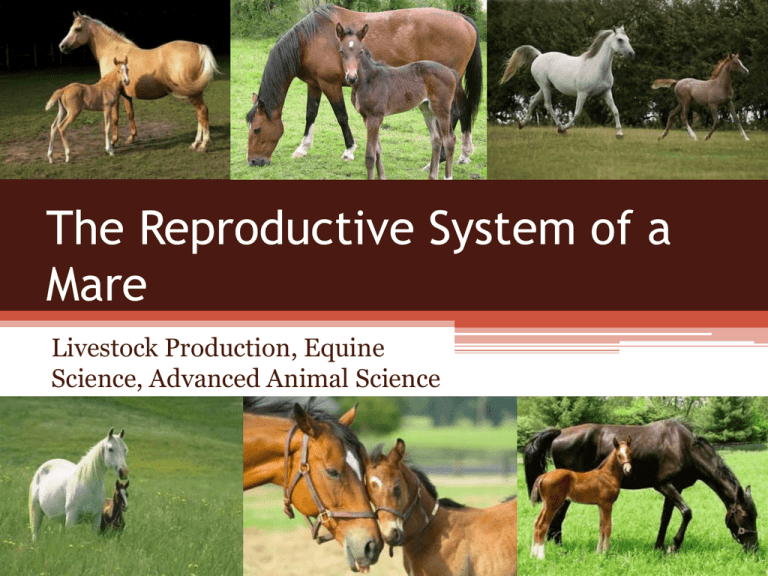
The Reproductive System of a
Mare
Livestock Production, Equine
Science, Advanced Animal Science
Introduction to the Estrous Cycle
• The recurring reproductive cycle in many female
mammals, including estrus, ovulation, and
changes in the uterine lining.
• Differs from the menstrual cycle in that the
endometrium is not shed
• Generally, species with estrous cycles are not
sexually active when they are not in the estrus
phase of their cycle
The Estrous Cycle
• Estrus (Follicular) –
period when mare is
sexually receptive to
stallion, the “heat” stage
• Diestrus (Luteal) –
period when mare is not
sexually receptive
The Estrous Cycle (cont.)
• Helps the mare
physically prepare for
conception
• Generally, the cycles
occur between spring
and fall (when the days
are longer)
• 18 - 21 days long
Terminology
• Anestrus – complete absence of estrus, prevents
mares from conceiving during the winter
months
• Seasonally polyestrus – mares go through
regular estrus cycles during part of the year
The Parts
• Vulva – the external opening of the reproductive
canal
• Vagina – 6-8 inch long muscular membrane
connecting the vulva to cervix; tissues are elastic
to accommodate penis during breeding and foal
during birth
• Cervix – about 4 inches, elastic muscle, located
behind vagina
• Uterus – contains 2 branches
that are referred to as “horns”;
protects and nourishes the
embryo/fetus
• Oviducts –attached to each
uterine horn; transports the
discharged egg from the
ovaries; the mare’s Fallopian
tubes
• Ovaries – 2-3 inch beanshaped organs; contains
follicles that hold the mare’s
egg cells
Reproductive Anatomy
During estrus…….
• Vagina becomes relaxed
and secretions increase
• Vulva relaxes
• Cervix increases
secretions, opens, and
relaxes
• Uterus becomes heavier,
losing its tone, due to
increased levels of
estrogen
Signs of Estrus
•
•
•
•
•
•
Frequent urination
“Squatting” posture
Winking of labia
Raising of tail
Receptive toward stallion
Discharge from vagina
Breeding Tips
• Have a vet examine the mare and stallion for
diseases and evaluate the chances of conceiving
• Wash the mare’s (and stallion’s) genitals with
warm non-soapy water to minimize the chances
of dirt and bacteria entering during the mating
process
• Wrap the upper 1/3 of mare’s tail with a clean
wrap so that there is a smaller chance of it
getting in the way
Breeding Methods
• Live Cover – methods in which mare and
stallion are physically brought together to breed
▫ Hand Mating – most widely used; people handle
both mare and stallion
▫ Corral Mating – mare and stallion are turned into
a paddock where they mate naturally
▫ Pasture Mating – stallion is turned out with a
group of mares for the entire breeding season
Alternative Breeding Methods
• Artificial
Insemination (AI) –
mare is inseminated by a
veterinarian
• Embryo Transfer –
removing the embryo
from a mare and
transferring it to a
surrogate mare
Artificial Insemination (AI)
Pros
Cons
• Semen sample from stallion
can be used for more than one
mare
• Frozen semen can be stored
for long periods of time,
making international breeding
possible
• Chances of contamination in
the mare is reduced
• Smaller chance of injury to
both the stallion and mare
• Humans handle every step of
this process, so there is a
higher chance of human error
• Various competition
organizations, such as The
Jockey Club, does not allow
competing horses to be bred
through AI
Important Hormones
• Estrogen –
▫ Secreted by follicles
▫ Hormone that causes the
pituitary gland to secrete
more LH
▫ Makes mare more receptive
toward stallion
▫ Prepares mare for conception
physically
▫ Peaks 1-2 days before
ovulation
• Progesterone –
▫ Prevents conception and
decreases the receptiveness of
the mare to the stallion
▫ Causes cervix to close
▫ At its lowest level during the
estrus phase
▫ Suppresses hormonal activity
to maintain pregnancy (if
mare is pregnant)
▫ If mare is not pregnant, the
estrous cycle will continue
More Hormones
• Luteinizing hormone (LH) –
▫ Secreted by the pituitary
▫ Assists the maturation of the
follicle
• Follicle stimulating hormone
(FSH) –
▫ Secreted by pituitary,
transported through
bloodstream to ovaries
▫ Stimulates the production of
follicles

